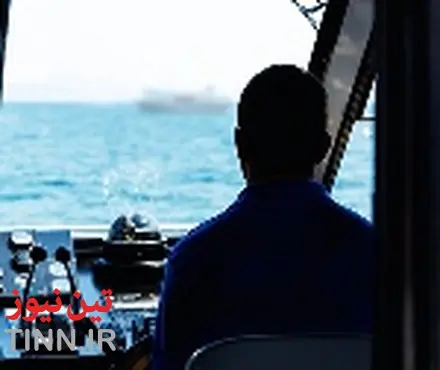|
Code:
27326
|
Watch keepers not keeping a safe visual watch

TIN news: Confidential Hazardous Incident Reporting Programme (CHIRP) has received a report of hazardous occurrence related to watch keepers not keeping a safe visual watch.
"At 0520 local time, own ship was heading 120 degrees at 18.5 knots, and was approaching a potentially busy crossing area in the Southern North Sea. The visibility was 7 miles, wind SE force 5, moderate sea
"We detected vessel XXXX at 12 miles and commenced radar plotting, and also tagged the AIS identity on a separate radar. Own vessel was about 5 points on the starboard bow of XXXX.
"At 7 miles, the navigation lights of XXXX were sighted.
"At 5 miles, XXXX was on a near steady bearing with a CPA of 0.1mile and crossing ahead at 0.3 mile. Own vessel placed into hand steering.
"At 4 miles, we flashed at XXXX with our aldis light. At 3 miles, we again flashed with the aldis light and called on VHF 16, subsequently changing to a working channel. XXXX replied that our AIS was not seen on his ECDIS display or detected on his radar, he stated that he would make a turn to port and make a round turn.
"Own vessel commenced turning to starboard. At 2 miles, XXXX was seen to start turning to port, own vessel continued turning to starboard to ensure a safe passing distance.
"When XXXX was heading about 270 degrees, she called own vessel – working channel used. XXXX stated that our AIS identity was transmitting false information of OOO degrees heading and 0 knots. I asked about a visual watch and a radar watch, answered with no answer other than an apology.
"Own AIS checked and all appeared OK. Later in the morning the vessel entered the German Bight reporting area and contacted the VTS. Our AIS was working correctly.
"I believe this case highlights the growing problem of watch keepers not keeping a safe visual watch or even a radar watch but simply relying on the AIS on an ECDIS display and probably doing duties other than keeping a safe watch. Unless XXXX had serious radar problems then there is no way that our large vessel would not be detected by radar."
The manager of ship XXXX carried out a full investigation of this incident. It transpired that at the time of the incident, a junior officer was on watch. He had been engrossed in a routine task of plotting navigational warnings rather than being attentive to the traffic situation. This was contrary to the Master's standing orders. The company promulgated the lessons from this throughout its fleet.
CHIRP posed some questions to other managers and senior officers. Are you confident that such a non-conformance could not happen on your vessel? What assurance processes do you have to minimise the possibility of this?
"At 0520 local time, own ship was heading 120 degrees at 18.5 knots, and was approaching a potentially busy crossing area in the Southern North Sea. The visibility was 7 miles, wind SE force 5, moderate sea
"We detected vessel XXXX at 12 miles and commenced radar plotting, and also tagged the AIS identity on a separate radar. Own vessel was about 5 points on the starboard bow of XXXX.
"At 7 miles, the navigation lights of XXXX were sighted.
"At 5 miles, XXXX was on a near steady bearing with a CPA of 0.1mile and crossing ahead at 0.3 mile. Own vessel placed into hand steering.
"At 4 miles, we flashed at XXXX with our aldis light. At 3 miles, we again flashed with the aldis light and called on VHF 16, subsequently changing to a working channel. XXXX replied that our AIS was not seen on his ECDIS display or detected on his radar, he stated that he would make a turn to port and make a round turn.
"Own vessel commenced turning to starboard. At 2 miles, XXXX was seen to start turning to port, own vessel continued turning to starboard to ensure a safe passing distance.
"When XXXX was heading about 270 degrees, she called own vessel – working channel used. XXXX stated that our AIS identity was transmitting false information of OOO degrees heading and 0 knots. I asked about a visual watch and a radar watch, answered with no answer other than an apology.
"Own AIS checked and all appeared OK. Later in the morning the vessel entered the German Bight reporting area and contacted the VTS. Our AIS was working correctly.
"I believe this case highlights the growing problem of watch keepers not keeping a safe visual watch or even a radar watch but simply relying on the AIS on an ECDIS display and probably doing duties other than keeping a safe watch. Unless XXXX had serious radar problems then there is no way that our large vessel would not be detected by radar."
The manager of ship XXXX carried out a full investigation of this incident. It transpired that at the time of the incident, a junior officer was on watch. He had been engrossed in a routine task of plotting navigational warnings rather than being attentive to the traffic situation. This was contrary to the Master's standing orders. The company promulgated the lessons from this throughout its fleet.
CHIRP posed some questions to other managers and senior officers. Are you confident that such a non-conformance could not happen on your vessel? What assurance processes do you have to minimise the possibility of this?















![AIRBUS A380 [MORE THAN 600 PASSENGER’S CAPACITY PLANE]](https://cdn.tinn.ir/thumbnail/4jCp4EQvCU0b/IjHVrSYQrIAqIzXuTzADR7qLYX4idQT4nfq__26E5SCUPLMqfhWkWajvuO9Wfq1ql1TjV4dhkrHliNQU82kMpo2NNftT_NGEwHc9KXtN_rk731bmifa2IQ,,/airbus-a380-structure1.jpg)

Send Comment